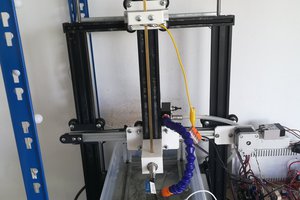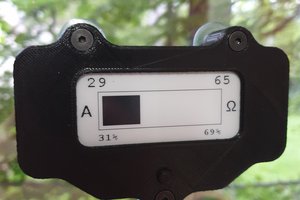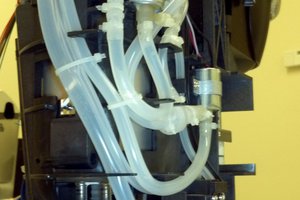When the the light is on the fish know that the feeder bar is active. The fish then hit the familair lure like feeder bar. the copper wire the bare is made of closes the circuit with the metal bell housing. The Arduino sees that the switch is closed and tells the RGB led to turn off, then directs the servo to go to a pre-programmed position that will push the feeder cap to deliver 1 unit of fish food. The Serial LCD screen beeps and audible sound and displays how many times the switch has been closed in the form of hits. The Minutes and seconds are displayed on the screen to show how long the program has been running. The open logger stores the hit count and the minutes and seconds of the hit for data analysis later on. Once this is all done then the light is turned back on to let the fish know they can hit the feeder bar again.
Training Fish to feed Themselves
The object of this invention is to train Goldfish to feed themselves.
 RoboPandaPDX
RoboPandaPDX

 Dominik Meffert
Dominik Meffert
 John Opsahl
John Opsahl
 Kenji Larsen
Kenji Larsen
 Beko Pharm
Beko Pharm
you really did a great job I also want to make something like this for my WordPress site https://petswithcharm.com/